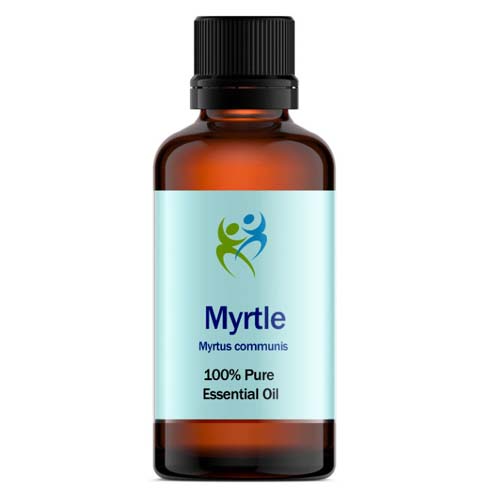
Botanical Name : Myrtus Communis
Plant Part : Leaf & Twig
Extraction : Steam Distillation
Origin : India
Product Description:
Myrtle Essential Oil comes from a small tree with many tough slender boughs. It has a brownish red bark with small pointed leaves. It produces flowers which turn into black berries; both the flowers and leaves are very fragrant
Product Color:
Pale Yellow
Common Uses:
Myrtle Essential Oil has common use as an astringent, antiseptic, vulnerary, bactericidal, expectorant and as a decongestant. Aromatherapy applications include usage to combat sore throats and coughs.roven aid to digestion. The familiar aroma of Mentha piperita is known for both its warming and cooling properties. Friendly to the sinuses, peppermint is also useful to the muscular system, especially for women during monthly cycles or menopause. Peppermint is commonly known from peppermint tea, chewing gum or candy, but the Essential Oil is much more strong and concentrated and should be used in moderation. Very fresh and clean smelling. Refreshing, mental stimulant, energizing, used to enhance well-being of digestive and respiratory system. Relieves bad breath. Good nerve tonic that helps with mental fatigue and nervous stress.
Blends Well With
Bergamot, Clary Sage, Clove Bud, Hyssop, Eucalyptus, Ginger, Lavender, Peppermint, Rosemary, Spearmint, Thyme, and Tea Tree.
History
The ancient Egyptians used Myrtle, a plant native to Africa, to remedy sore throats and coughs. As early as 1867 there is also evidence that the essential oil was commonly being used by medical practitioners.
Caution:
Myrtle Essential Oil can be possibly toxic in high concentrations, and should not be used during pregnancy.











